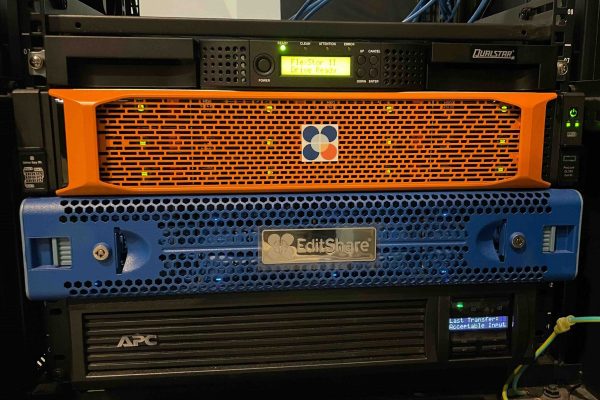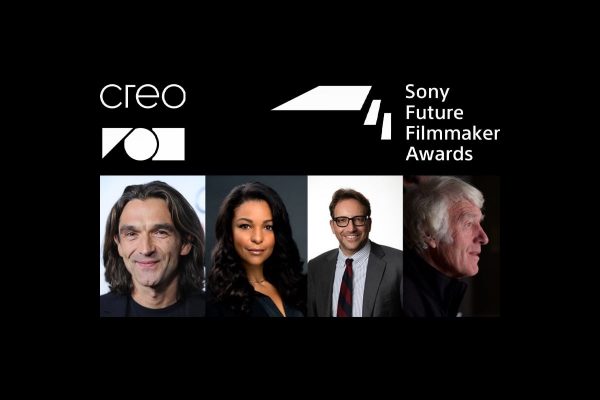Blue Zoo has been described as, “the ultimate marine wildlife adventure documentary series” and when chatting with the DOP, Dean Cropp from the show’s production company Air Pig Productions, it’s not hard to see why. The show, shot entirely with Sony PMW-200 and PMW-300 cameras, is an empowering 13-part observational documentary that follows eight young Australian and Irish marine animal enthusiasts aged 14-16 as they embark on an intense 6-week training mission to become dolphin and seal experts and have the adventure of a lifetime.
Cropp explained, “Blue Zoo was a very unique production and as such our choice of equipment, particularly the cameras we were going to use, was crucial. We did a lot of research into different cameras with different sized sensors and when all were assessed we decided on the Sony PMW-200 and PMW-300 as the best choices for a variety of reasons, in particular the ability to shoot progressive or interlaced along with a bunch of frame rate and bit rate options right up to 50Mbps with a 4:2:2 colour space. It’s this highest quality progressive recording format we used for Blue Zoo and all wrapped up in the XDCAM codec that gave us a much better workflow. Also, as we were shooting Blue Zoo for an Australian and European broadcaster, the PMW-200 with three and a half-inch sensors and its option of shooting 50Mb/s was a must to meet their high quality standards and helps futureproof the footage. Formats are king at the moment and having a camera that can do them all is invaluable.”
Cropp had a significant amount of experience with the PMW-200’s predecessor the Sony PMW-EX1, so he already had a sense of how the PMW-200 would work and how he could best use it on Blue Zoo.
Cropp continued, “The EX1 was always a very easy camera to use, intuitive too. Once I tested the PMW-200 I realised Sony had improved on the EX1 and I knew it would be perfect for a custom-built underwater housing we wanted to use on Blue Zoo and for the run ‘n’ gun doco style we were going for. As well as the below water shots we also wanted the PMW-200 for above water so its compact size and excellent ergonomics were big pluses.”
Blue Zoo was a series that had a hectic production schedule with Cropp and his crew often multi-tasking the various roles that were required each day. With that in mind Cropp found the versatility of the PMW-200 much to his advantage.
He added, “The PMW-200 is very intuitive and easy to use. On several occasions I handed it over to a shooter who hadn’t used one before and they were up and running in less than ten minutes. There’s also been a significant improvement in colour space and latitude with this camera. We were using polarising filters regularly but the colourimetry is so good, many shots without polarising filters looked just as good, despite the high contrast conditions, full sun and lots of blue sky the PMW-200 just ate it up. I would say it’s as good as a full-sized shoulder mount camera in this respect.”
Cropp used the PMW-200 as the second unit cameras on Blue Zoo. He also had a running shooter/producer getting footage for the show’s online, behind the scenes and extras sections. The cameras often provided the third angle and worked seamlessly with the show’s other cameras, the PMW-300. As part of the water-based shoots the PMW-200 often captured above and below water shots that included the rookies surfing and interacting with marine life, including dolphins.
“The sub-surface stuff was difficult to shoot,” explained Cropp. “Mainly due to the big difference in exposure and contrast that you get when you’re half in and half out of the water. Thankfully the PMW-200 performed very well and was extremely well balanced with both the standard and wide angle adaptor lenses we used. Another reason we used the PMW-200 is that we wanted great colour and not too shallow a depth of field so that we could have all the action sharp, vibrant and in focus as that was the look I was going for. The pre-show testing already showed that the camera, despite having a smaller sensor, would be the perfect fit for documentary. No hunting around for focus or worrying about lighting issues as you often have to with a larger sensor camera better suited to our setup interviews where conditions were controllable.”
Working alongside the Sony PMW-200 were the show’s PMW-300 cameras that Cropp describes as his “main doco A and B cameras”. Whilst similar in some respects to the PMW-200 there were several reason for the use of both cameras.
Cropp explained, “The viewfinder on the PMW-300 is just brilliant or kick ass as we would say! It really made a huge difference as we could see what we were shooting and the sharpness of the colours in great detail especially out in bright sunlight. The viewfinder is that good it also acted as a monitor and gave us a great idea of exactly what was being shot. Also the fact that you can interchange lenses on this camera is a massive bonus. For Blue Zoo we used a Fujinon wide angle lens and the results were excellent. The PMW-300 is also great to use in a helicopter or road vehicles because of its optical stabiliser capability. Detailed colour controls meant we could get the bright, exciting and vibrant look I wanted for Blue Zoo straight from the camera or shoot a flatter curve giving us the most options during the grading process. The PMW-300s were the work horses that worked extremely hard every day following the rookies around and documenting everything they did. Our rookies were pretty unpredictable and we had to be ready to shoot at a minute’s notice. This included in helicopters, on boats, islands and underwater. We had two PMW-300s working in tandem alongside our PMW-200s to make sure we didn’t miss a thing. Each camera would cross shoot the other for one on ones and group shots of the marine experts and rookies before being sent off to shoot individual activities.”
Air Pig’s use of the PMW-200 and PMW-300 cameras was also partly price based as, due to the cost of the cameras, the production was able to use five cameras.
Dean Cropp concluded, “I’m happy to say we made great choices in the PMW-200 and PMW-300 for Blue Zoo. There were other shoulder-mount options we could have chosen but the weight, ergonomics and sensors in these two cameras meant we could use them all day every day and get great results.”
Blue Zoo will air on ABC3 TV and RTÉ in Ireland later this year.
Press Release









Rob Shaw
How wonderful, a children’s TV series about captive marine mammals.